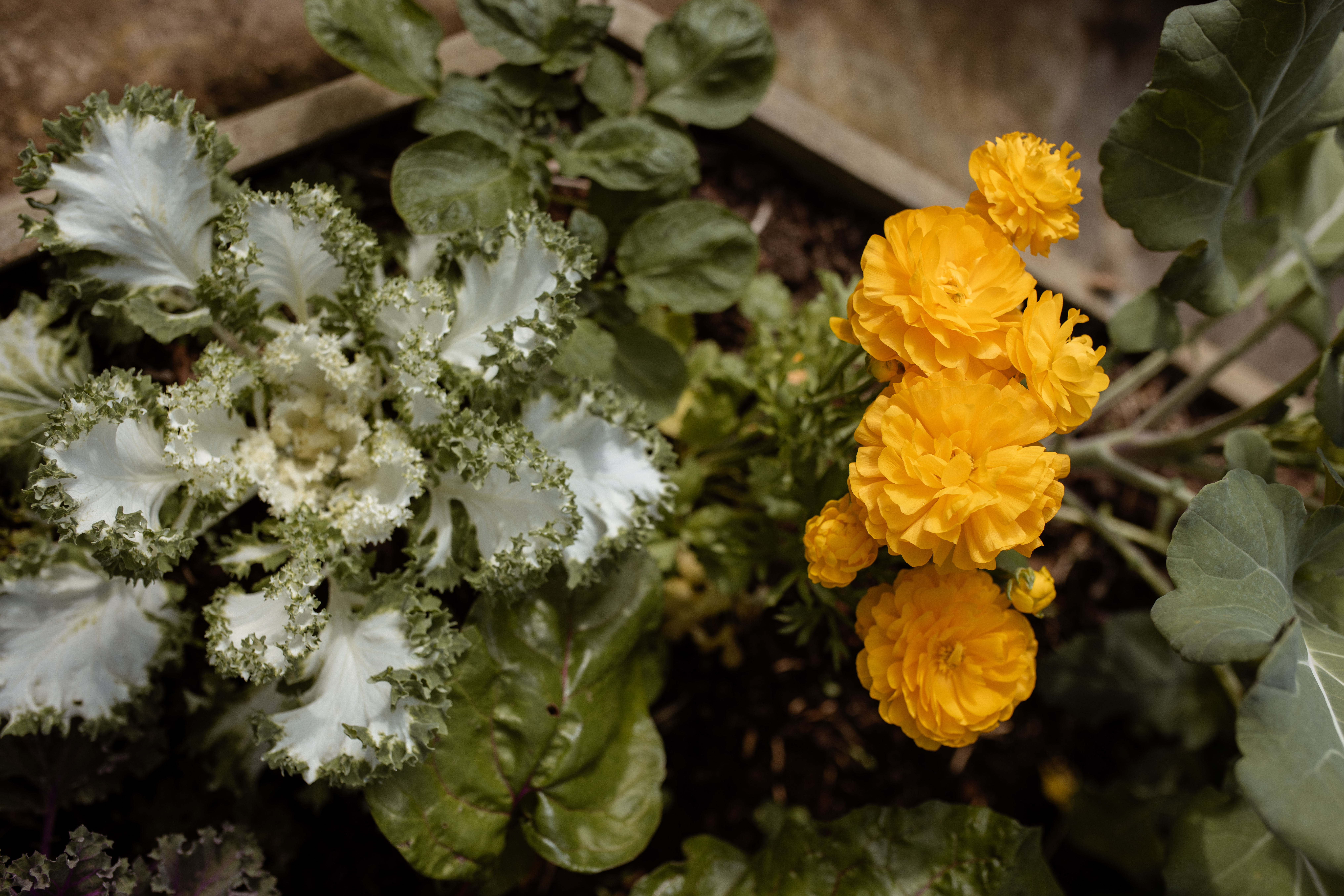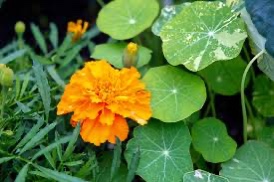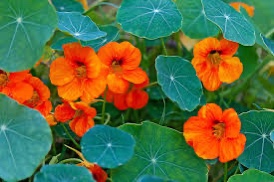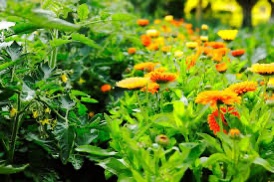
Better Together – Plant for success!
May 2, 2025
Good Companions!
Tunnel house growers have been doing it for years! We’re talking companion planting, the practise of sowing and growing selected plants alongside others in the belief that a particular combo will be beneficial to producing a healthy crop. While science doesn’t always concur on the success of companion planting, many tunnel house gardeners believe in it, and use it to keep bugs at bay, improve soil fertility, pollination, and flavour, and to make the best use of greenhouse space. Will companion planting become a favourite with you? Test drive some of the following tips to find out!

Bug-briefings!
A tunnel house offers a rarefied environment where plants thrive in a relatively controlled environment. The tunnel house is where heat is locked in and cold is shut out. It banishes wind-chill and protects foliage and fruit from being battered from wild weather. But that same near-perfect home is also attractive to pest as well as beneficial insects, especially in the colder months when living outdoors can spell certain death for these tender creatures. Tunnel house gardeners employ several companion planting techniques to invite in beneficial insects, while deterring the pests. These include:
Sacrificial plants
Pest insects often attack the weakest plants. By growing a pest-attractive plant (such as a Brussels sprout) 2 or 3 meters away from your tunnel house, it may be possible to lure pest bugs (such as aphids) to it, causing most of the unwanted insects to miss the other delicacies inside your tunnel house.
Natural barriers
Once pests-bugs discover a tunnel house plant to their liking, they can be quick to move onto its next door neighbour. Before you know it, your entire tunnel house crop is infested. Companion planting can involve growing a natural barrier (in the form of a pest-repelling plant) between plants that are susceptible to pest bugs. This slows down the path of the pests while you get on with natural methods of pest control. An example of a companion barrier is the use of nasturtium between tomato plants (hint: nasturtium is a vine and can be trained up a support so that it doesn’t creep over the floor of the tunnel house, disrupting valuable air flow). Mint can be used as a barrier between brassica or capsicum (hint: if growing mint as a companion plant, confine it to a pot with a saucer so that the roots of this delicious but invasive herb don’t dig into the bed of your tunnel house).

Two-ponged attack!
The perfumed foliage and/or blooms of some plants are credited by many as being a natural deterrent to unwanted bugs. Calendula is often used in this way, with French marigolds (rather than the African variety) being credited as being the most useful for the purpose of deterring pests. It’s thought that aphid and whitefly, in particular, steer clear of the perfume of marigolds. Alliums (plants in the onion family) are also used as a pest deterrent. Try planting your garlic cloves in pots between winter tunnel house veggies such as broccoli and cauliflower. In summer, sow spring onion and garlic chives between aubergine, capsicum, and chili bushes.

Pretty pollinators
Some greenhouse plants require insects to pollinate them while others, even when they are self-pollinating, produce a better crop when they receive a helping pollination hand from insects. But many tunnel house plants (such as tomatoes, cucumbers, and capsicum), have insignificant blossoms. In the outside garden environment, they will be noticed by pollinating insects flying by, but their colour and perfume may not be outstanding enough to lure pollinators into a covered environment such as a tunnel house. That’s where you can use ‘notice-me’ companion plants to work their magic. These are bright-blooming plants with a strong perfume that can be planted between tunnel house cropping plants. Alternatively, these flowering plants can be grown in pots that can be moved into the tunnel house as they come into bloom. Move the potted plants out when their blooms are spent or while their second round of flowers are being produced, and replace them with another pot containing a plant that is blooming. (Hint: pollinator insects love the flowers of plants in the Apiacea – or Umbelliferae – family). These include Queen Anne’s Lace, parsley, dill, carrot, and parsnip. Some tunnel house growers leave a winter-grown tunnel house carrot to go to seed over summer so that it then acts as a draw-card to pollinators.. Borage, with its bright, sky-blue flowers, beloved by bees, is an annual summer herb to grow in pots for use in the tunnel house as a pollinator plant.
Knocking the Nematodes
Nematodes are tiny (less than 1mm long) worm-like animals which live in the soil. They damage plants by feeding off their roots. The damaged roots are then less able to feed the plant and keep it healthy. Companion planting can help combat some types of nematodes by suppressing their numbers or killing them. Plants which do this include French Marigold ‘tangerine,’ Chrysanthemum ‘Escapade,’ and some Brassica naupus varieties. By growing these plants in the tunnel house along side cropping plants, nematode numbers can be reduced to sustainable levels.
Right-root companions
When it comes to sowing and growing, many tunnel house edibles are happy to co-exist within a reasonably close proximity of each other, thus saving precious undercover space. This ability to share ground space is because some plants (such as tomatoes, lettuce, spinach, and leafy and heading brassica) have a shallow root system while others (such as radish, carrot, parsnip, and potatoes) are deep-rooted. This difference means that lettuce and carrots can happily grow side by side because each is happy to occupy a different root zone in the tunnel house bed. This smart form of companion planting works well if the following points are also observed:
- Don’t plant so close as to prevent air from circulating around the plants.
- Provide plenty of nutrients when preparing the bed as there will be a great draw on soil nutrients from plants grown in close proximity to each other.
- Harvest carefully so that roots of neighbouring plants are not disturbed (for example, cut lettuce off at the ground rather than pulling it up, roots and all. When pulling up carrots and radishes, place fingers around the head of the tap root to limit soil disturbance.
Naturally nutritious
Companion planting also extends to providing garden nutrients for the soil. For example, a tunnel house bed will accommodate, at the same time, companionable ‘cover-crops’ (such as rye or lupin), and a patchwork planting of winter greens (such as lettuce, celery, and tat soi). While the latter are harvested over the colder months, the former grow on into early spring when they can be cut down and dug back into the tunnel house bed. As they break down, they feed nutrients back into the soil, ready to sustain summer tunnel house plants. (Hint: if you want to grow brassica in your tunnel house, avoid growing a cover-crop, such as mustard. Brassica require rotation management in order to minimise the risk of disease such as club root.)
While some kinds of companion planting do not always enjoy the support of science, many tunnel house growers employ the practice as one of a variety of tools in their box of gardening tricks.

 May Madness
May Madness